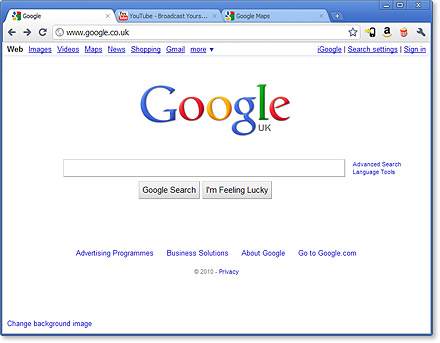![]()
Could hackers be listening to you through the Chrome browser? That’s the claim of a developer, even though Google denies the possibility.
On Wednesday, Israeli developer Tal Ater wrote on his blog that there is a vulnerability in Google’s Chrome browser that could allow malicious sites to listen and “record anything said in your office or your home, as long as Chrome is still running.”
Users are normally required to click in order to grant permission every time a site wants to use your computer’s microphone, such as accepting voice commands for search. Chrome will show a red dot that blinks as the recording occurs, similar to a physical recording device.
Pop-Under Window
But, Ater said, when a user clicks the on-screen button to start recording, the site requesting permission “may have also opened another hidden pop-under window.” Pop-unders are sometimes displayed by sites to show additional advertising.
The pop-under window, he said, can “start listening in without asking for permission,” so that the granted permission is continued in “a window that you never saw, never interacted with, and probably didn’t even know was there.” Additionally, although the pop-under window could continue the recording surreptitiously, it is not required to show the blinking red recording dot, as the main window is.
Ater pointed out that most sites with speech recognition use secure HTTPS connections, which means that, once permission is given by a user for the mic, “Chrome will remember your choice, and allow the site to start listening in the future, without asking permission again.”
A demo video on his blog describes this flaw as essentially “turning Google Chrome into an espionage tool that compromises the privacy in your office or your home, even when you’re not using your computer.” The video contends that the flaw can be programmed to stay dormant and “only start recording when you’ve said certain interesting keywords.”
No Fix Yet
The pop-under window can also be disguised, according to Ater, so that it looks like a standard ad even though it is keeping the listening function active.
Ater said he reported the exploit to Google’s security team on Sept. 13 and, by the Sept. 19, the company’s engineers had identified the bugs and come up with fixes. A patch was ready on the 24th, he said, and on the 27th his discovery was nominated for a prize by Chromium’s Reward Panel. Prizes up to $ 30,000 are available for finding and reporting bugs.
But, although Ater praises the engineers, he said six weeks later the fix has not yet been issued. When he asked why, he said he as told there was “an ongoing discussion within the Standards group,” and nothing had been decided yet. By now, four months have elapsed and he decided to go public.
For its part, Google said that a user can tell which Chrome browser window is recording through an icon in the Windows system tray or in the OS X status indicator. A camera icon shows in Ater’s demo video, in fact. But others have reported that the icon doesn’t always show up. Google has indicated that the W3C standard requires that speech input ends when a user changes windows or tabs, but there is disagreement about whether that is actually part of the spec.
NewsFactor Network







